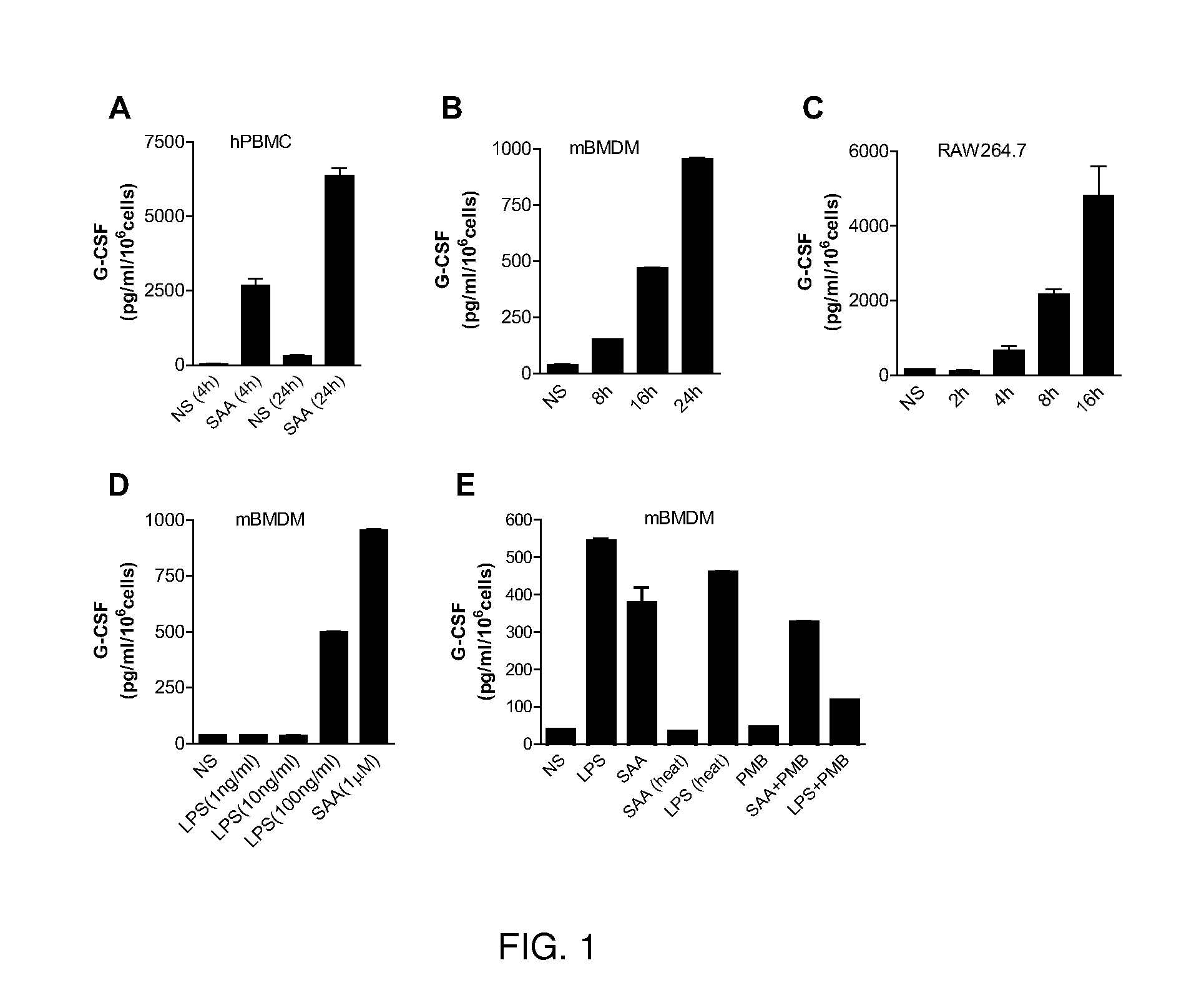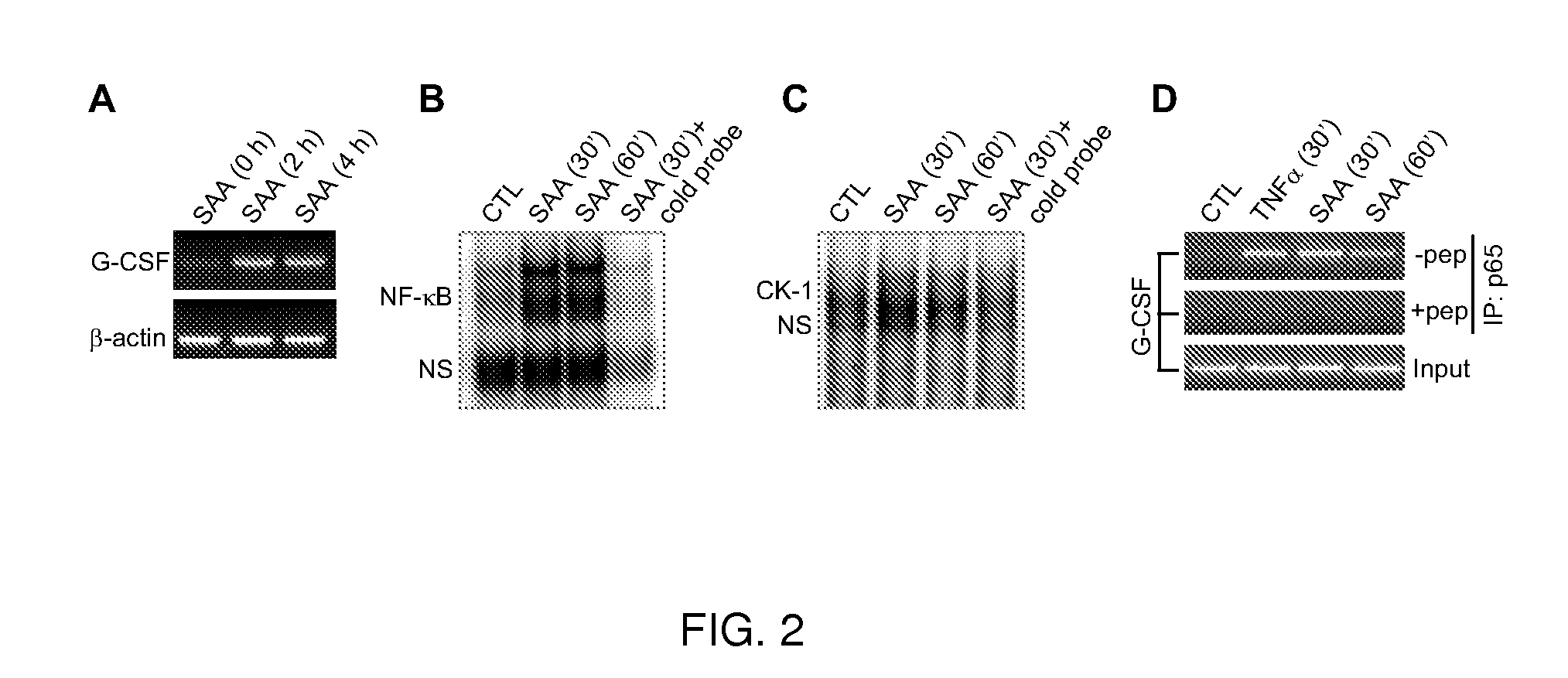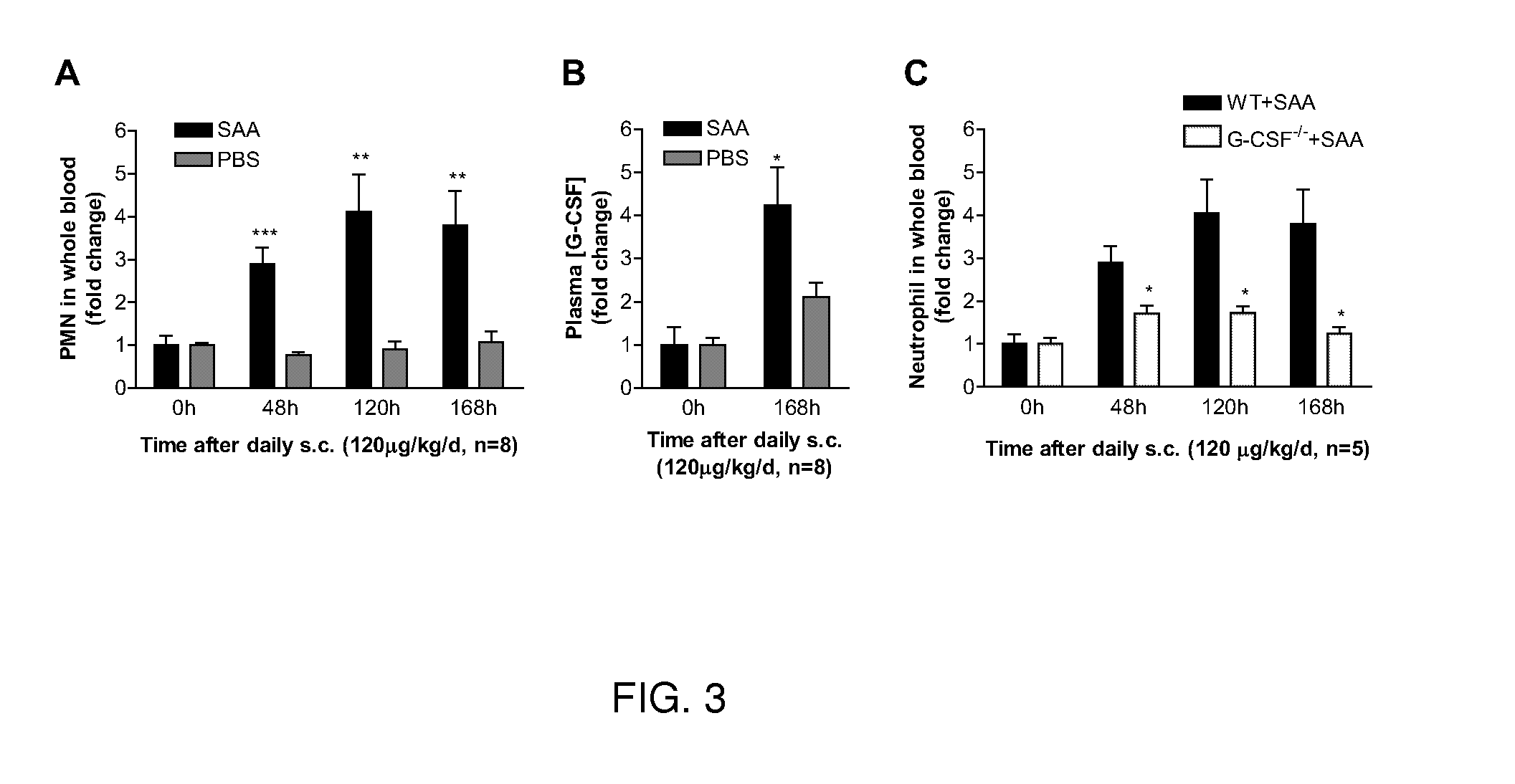Toll-like receptor agonists and antagonists and methods of use thereof
a technology of toll-like receptor and agonist, applied in the field of molecular biology, genetics, immunology, can solve the problems that the small amount of lps found in the saa preparation cannot account for the robust increase of g-csf, and the g-csf has not been enhanced
- Summary
- Abstract
- Description
- Claims
- Application Information
AI Technical Summary
Benefits of technology
Problems solved by technology
Method used
Image
Examples
example 1
Identification of SAA as a Danger Signal Mediator for TLR2-Dependent G-CSF Production and Neutrophilia
[0052]Increased neutrophil count or neutrophilia is a host response to bacterial infection as well as noninfectious insults such as trauma, malignancy and surgery. The mechanism by which noninfectious factors induce neutrophil expansion remains unknown. As described herein, the acute-phase protein SAA, a widely cited biomarker for inflammation, induces neutrophilia in mice. The SAA-induced neutrophilia is diminished in G-CSF deficient mice. In gain-of-function assays, SAA binds to the ectodomain of TLR2 and stimulates TLR2-mediated transcriptional activation, leading to increased expression of G-CSF. In TLR2 deficient mice, the SAA-induced G-CSF secretion and neutrophilia is significantly reduced. The ability of SAA to relay danger signal through TLR activation suggests a potential mechanism by which this acute-phase protein contributes to sterile inflammation.
Results
[0053]SAA induc...
example 2
Identification of SAA as an Endogenous Ligand for TLR2
Results
[0059]To determine whether TLR2 is a receptor for SAA, a TLR2-expressing cell line was prepared in HeLa cells, which contain very little endogenous TLR2 transcript (FIG. 6A, upper panel). Stable transfection of HeLa with a TLR2 expression construct (pUNO-hTLR2, FIG. 12) resulted in a substantial increase in the TLR2 transcript (FIG. 6A, middle panel), along with abundant cell surface expression of TLR2 as determined by flow cytometry (FIG. 6B). A significantly increased NF-κB luciferase activity (p<0.01) was detected in SAA-stimulated TLR2-HeLa cells compared to mock-transfected HeLa cells (FIG. 6C). TLR2 is a class I transmembrane protein that contains an extracellular ligand binding domain (ectodomain), a transmembrane domain and a cytoplasmic domain consisting of the Toll / IL-1 / receptor / Resistance (TIR) motif. Studies have shown that TLR2 forms heterodimers with TLR1 and TLR6 (Ozinsky et al., 2000), which display differe...
example 3
Additional Embodiments
[0083]In one embodiment of the present disclosure, a method includes providing a composition including the expression of TLR2 with another TLR (e.g., TLR1) that is known to form a heterodimer with TLR2. The composition can increase activation of transcription factor in the plurality of cells after SAA stimulation.
[0084]In one embodiment of the present disclosure, a method includes: providing a plurality of cells, each cell including a purified nucleic acid encoding TLR2; contacting the plurality of cells with SAA; analyzing changes in the phosphorylation pattern of signaling proteins including members of the MAP kinase family as an indication of cell activation; analyzing changes in the intracellular level of proteins including IκBα as indication of signaling events leading to transcriptional activation such as NF-κB activation.
[0085]In one embodiment of the present disclosure, a method includes providing a composition including the expression of a TIR domain d...
PUM
| Property | Measurement | Unit |
|---|---|---|
| concentration | aaaaa | aaaaa |
| concentration | aaaaa | aaaaa |
| concentrations | aaaaa | aaaaa |
Abstract
Description
Claims
Application Information
 Login to View More
Login to View More - R&D
- Intellectual Property
- Life Sciences
- Materials
- Tech Scout
- Unparalleled Data Quality
- Higher Quality Content
- 60% Fewer Hallucinations
Browse by: Latest US Patents, China's latest patents, Technical Efficacy Thesaurus, Application Domain, Technology Topic, Popular Technical Reports.
© 2025 PatSnap. All rights reserved.Legal|Privacy policy|Modern Slavery Act Transparency Statement|Sitemap|About US| Contact US: help@patsnap.com



